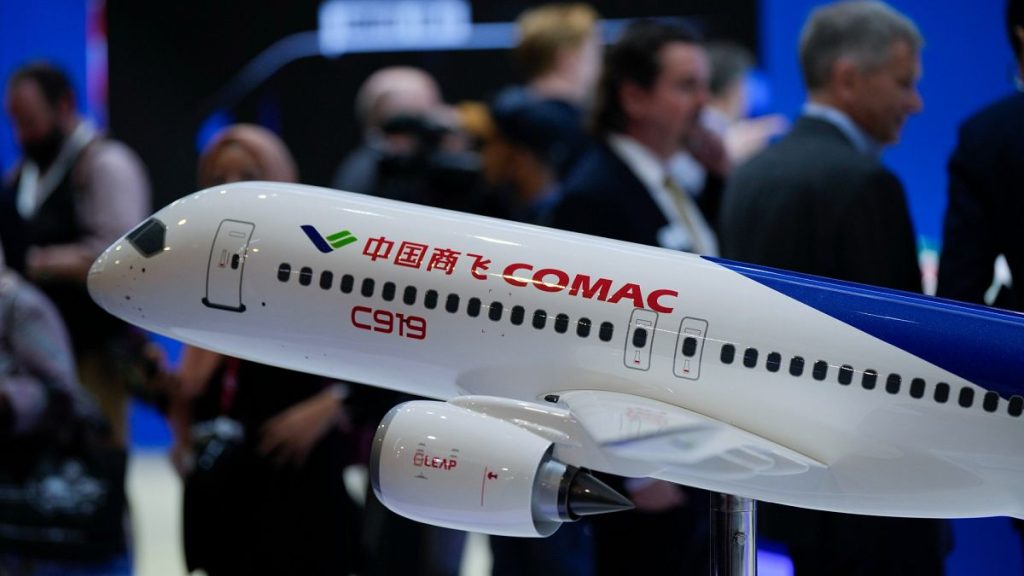China’s Comac: A Budding Aviation Giant with Global Ambitions
China’s aviation landscape is undergoing a significant transformation with the emergence of the Commercial Aircraft Corporation of China (Comac), a state-owned enterprise poised to challenge the dominance of established giants like Boeing and Airbus. Comac’s flagship aircraft, the C919, a narrow-body, single-aisle passenger jet, has already taken to the skies on domestic routes, marking a pivotal moment in China’s pursuit of self-sufficiency in aircraft manufacturing. Backed by substantial government investment, Comac embodies China’s broader ambition to bolster its technological prowess and reduce reliance on foreign manufacturers. This strategic move aligns with China’s long-term economic and geopolitical goals, aiming to secure a prominent position in the rapidly expanding global aviation market. While the C919 currently serves domestic routes, Comac has ambitious plans for international expansion, starting with Southeast Asia as early as 2026, followed by a foray into Western markets.
Comac’s emergence coincides with a period of robust growth in the aviation sector. The post-pandemic resurgence in air travel, fueled by attractive fares and diverse destinations, has propelled market expansion. Industry forecasts predict continued growth, with the global aviation market projected to reach substantial figures by the end of the decade. This positive market outlook presents a significant opportunity for Comac to carve out its market share and establish itself as a key player in the industry. However, Comac faces the formidable challenge of scaling up production to compete with the established production rates of Boeing and Airbus. Currently, Comac produces one C919 aircraft per month, a figure considerably lower than its competitors. While projections indicate a potential increase in production to 11 aircraft per month by 2040, this pales in comparison to the output of Boeing and Airbus, which are both aiming for significantly higher production rates in the coming years.
Comac’s journey towards becoming a global aviation contender involves not only ramping up production but also securing necessary certifications for international operations. While the C919 has commenced domestic flights, it awaits approvals that will permit it to spread its wings on international routes. This certification process is crucial for Comac’s global expansion plans and will be closely monitored by industry observers. In addition to the C919, Comac is developing the C929, a wide-body jet designed for long-haul flights, further demonstrating its commitment to expanding its product portfolio and catering to diverse market segments. The development of the C929 signifies Comac’s ambition to compete directly with Boeing and Airbus in the wide-body aircraft market, a segment currently dominated by these established manufacturers.
While Comac faces the daunting task of scaling up production and securing international certifications, the current landscape presents some opportunities. Both Boeing and Airbus have experienced setbacks, including production issues, supply chain disruptions, and even tragic crashes in the case of Boeing. These challenges have impacted their delivery schedules, customer satisfaction, and overall market perception. These difficulties, faced by the established players, potentially create an opening for a newcomer like Comac to gain a foothold and attract customers seeking alternative options. Comac can potentially capitalize on these vulnerabilities by offering competitive pricing, reliable delivery schedules, and innovative aircraft designs. However, it remains to be seen how effectively Comac can leverage these opportunities and convert them into tangible market gains.
Comac’s strategy hinges on a multi-pronged approach. Domestically, the company enjoys the support of major Chinese airlines, including China Eastern Airlines, Air China, and China Southern Airlines, which have already integrated the C919 into their fleets. This domestic backing provides Comac with a crucial foundation for building operational experience, refining its manufacturing processes, and establishing a track record of reliability. Internationally, Comac has set its sights on Southeast Asia as its initial target market, a region experiencing rapid economic growth and increasing demand for air travel. This strategic focus allows Comac to gain valuable international experience before venturing into more competitive markets like Europe and North America. This phased approach to international expansion allows Comac to gradually build its global presence while mitigating risks and learning from its experiences in each market.
The long-term success of Comac hinges on several critical factors. Firstly, the company must significantly increase its production capacity to meet anticipated demand and compete effectively with established players. This requires substantial investment in manufacturing facilities, supply chain optimization, and skilled labor. Secondly, Comac needs to secure international certifications for the C919 and subsequent aircraft models, enabling it to expand its operations beyond domestic borders. Thirdly, Comac must build a strong brand reputation based on reliability, safety, and customer satisfaction. This involves not only delivering high-quality aircraft but also providing excellent after-sales service and support. Finally, Comac needs to navigate the complex geopolitical landscape and potential trade barriers that could impede its global expansion plans. Overcoming these challenges will require strategic partnerships, diplomatic efforts, and a commitment to adhering to international regulations and standards.














